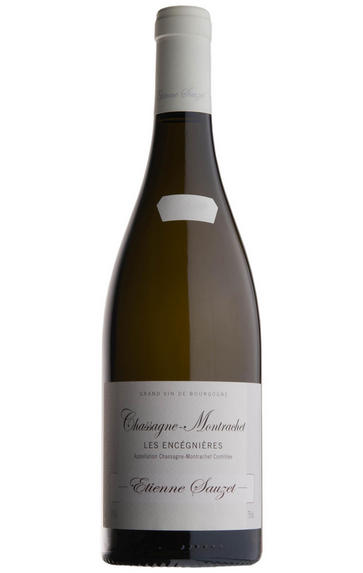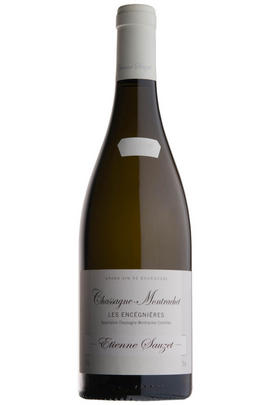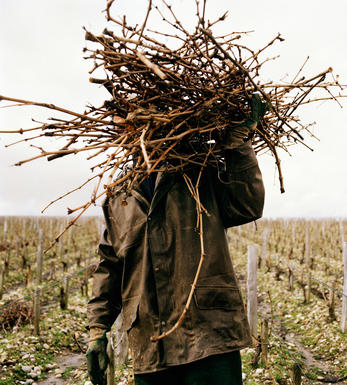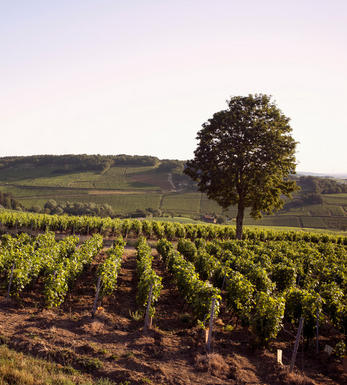
2013 Chassagne-Montrachet, Les Encégnières, Etienne Sauzet, Burgundy

About this WINE

Etienne Sauzet
The original Etienne Sauzet (1903-75) put together a wine domaine of around 12 hectares and established the Sauzet name as one of the top two or three addresses in the village. Initially the domaine was taken over by his son-in-law Gérard Boudot, who arrived in 1974, but in 1991 the inheritance was split up between the three grandchildren, one of whom (Jean-Marc Boillot) chose to take out his share of the vineyards.
Since that time Gérard Boudot, now joined by daughter Emilie, and son-in-law Benoît Riffault, has augmented his holdings by purchasing grapes, some from the same appellations as his own holdings below, others to complement the range, such as Champs Gains, Chevalier-Montrachet and Le Montrachet itself.
SARL Sauzet buys the grapes from three family property-owning companies (the original Sauzet vineyards, those purchased since by Gérard Boudot, and those recently purchased by Emilie and Benoît) and also grapes from two other producers with whom they have close contact.
The vineyards have been farmed organically since 2006 and after two years of experimentation all switched to biodynamic cultivation from 2010. The grapes are sorted to remove grey rot where necessary, then pressed without crushing and fermented in oak until racking into tank before the next harvest, for a further six months élévage on the fine lees. The premiers crus receive between 20 per cent (La Garenne) and 33 per cent (Combettes) new oak with 40 per cent for the grands crus.
The generic and village wines are elegant and stylish, while the 1er and Grands Crus are splendidly concentrated and opulent, yet beautifully proportioned and never overbearing.They are some of the most sought-after wines from Puligny and are models of intensity and balance.
Jasper Morris MW, Burgundy Wine Director and author of the award-winning Inside Burgundy comprehensive handbook.

Chassagne-Montrachet
When it comes to the world's greatest white wines, the border between Chassagne and Puligny is the ‘X’ that marks the spot, the treasure at the end of the rainbow. Within a few hundred metres lie five wonderful Grands Crus, three of which are in Chassagne. They are led by the luscious, perfumed but variable Le Montrachet, to which Chassagne gained permission in 1879, along with Puligny, to hyphenate its name.
Both Montrachet and the rich, nutty, honeyed Bâtard-Montrachet are shared between Chassagne and Puligny. The fragrant, very fine and rare Criots-Bâtard-Montrachet however, lies entirely within Chassagne's borders. The Grands Crus have their own appellations, which is why Chassagne (or Puligny) does not appear on the label.
Although the most southerly of the three great names of the Côte de Beaune, Chassagne's style is often described as lying between that of Puligny-Montrachet and Meursault: less fine than Puligny, less rich than Meursault but containing elements of both. Chassagne is minerally yet succulent, and often floral with hints of hazelnuts. Despite a bevy of very good Premiers Crus, it is not as good or famous, overall, as Meursault and Puligny, but it is usually extremely good value. Grands Crus should not be opened before eight years of age, and can last for 20 or more. Premiers Crus are at their best from five to 15 years of age; village wines from three to eight.
Perhaps surprisingly, given that the name ‘Montrachet’ is so synonymous with white wine, much of the soil in Chassagne is more suited to Pinot Noir than Chardonnay. Indeed it was only really in the second half of the 20th century that white wines began to dominate here. The reds have a firm tannic style that needs time to soften, with the best examples coming from the Premiers Crus Morgeot, Boudriotte and Clos-St Jean. At their best they combine the weight of the Côte de Nuits with the suppleness of the Côte de Beaune.
180 hectares of village Chassagne-Montrachet
159 hectares of Premier Cru vineyards. Several of the larger ones are subdivided and may be cited under various different names. The best include Caillerets, Ruchottes, Chaumées, La Boudriotte
11 hectares of Grand Cru vineyards: Le Montrachet (part), Bâtard-Montrachet (part) and Criots-Bâtard-Montrachet

Chardonnay
Chardonnay is often seen as the king of white wine grapes and one of the most widely planted in the world It is suited to a wide variety of soils, though it excels in soils with a high limestone content as found in Champagne, Chablis, and the Côte D`Or.
Burgundy is Chardonnay's spiritual home and the best White Burgundies are dry, rich, honeyed wines with marvellous poise, elegance and balance. They are unquestionably the finest dry white wines in the world. Chardonnay plays a crucial role in the Champagne blend, providing structure and finesse, and is the sole grape in Blanc de Blancs.
It is quantitatively important in California and Australia, is widely planted in Chile and South Africa, and is the second most widely planted grape in New Zealand. In warm climates Chardonnay has a tendency to develop very high sugar levels during the final stages of ripening and this can occur at the expense of acidity. Late picking is a common problem and can result in blowsy and flabby wines that lack structure and definition.
Recently in the New World, we have seen a move towards more elegant, better- balanced and less oak-driven Chardonnays, and this is to be welcomed.


Buying options
Add to wishlist
wine at a glance
Delivery and quality guarantee